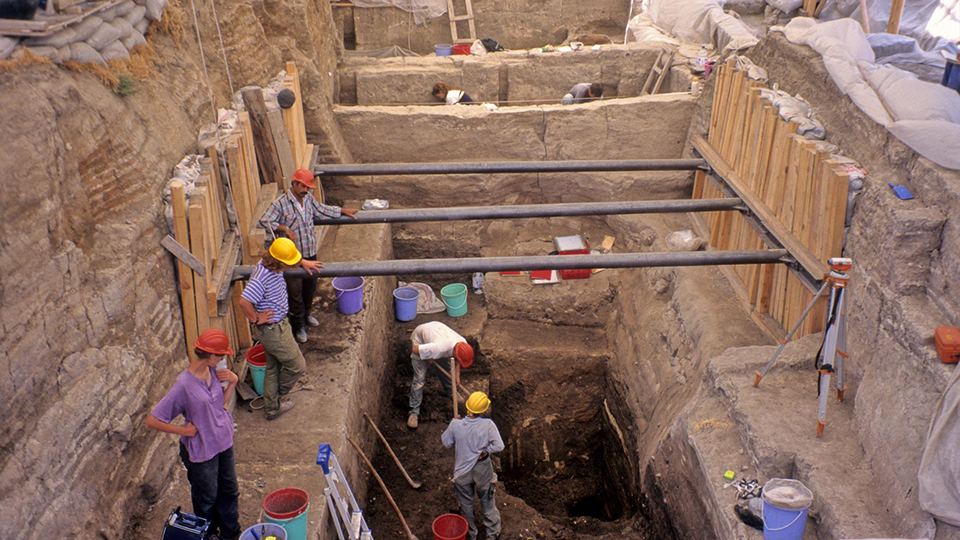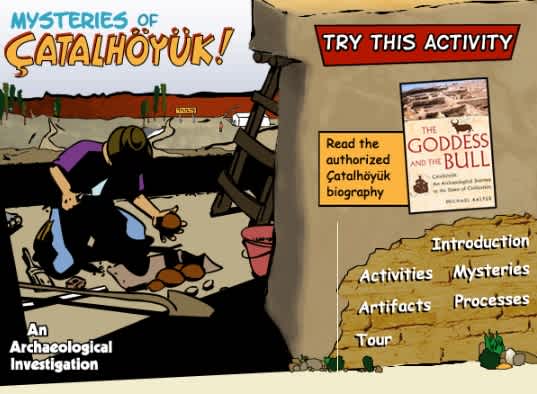
Digging into the physical and digital archaeology of Çatalhöyük
What does a 9,000-year-old Neolithic settlement have to do with the internet of today?
Çatalhöyük is a town you probably haven’t heard of before unless you’ve visited smm.org/catal. Pronounced "cha-tal hay OOK,” (which you can hear by visiting the homepage) this ancient place is located in modern-day Turkey and is one of the best-preserved settlements from the Neolithic and Chalcolithic periods. Once home to 10,000 people, it was thought to have covered an area the size of over 50 soccer fields. While Çatalhöyük isn’t the only remaining town from this period, it’s unique because of the numerous artistic and cultural remnants that help scientists paint a picture of daily life, religion, and existence in the “New Stone Age.”
So why Çatalhöyük, and why now? In 2001, the Science Museum of Minnesota created an exhibit that explored Çatalhöyük’s people, culture, and archaeology. The title of the accompanying website, Mysteries of Çatalhöyük: An Archaeological Investigation, now has a double meaning: the archaeological mysteries we explored and the continuing mystery of this old website’s popularity.

Chapter 1: What is the deal with Mysteries of Çatalhöyük?
The Mysteries of Çatalhöyük is what many might consider “old-school.” Made in the days of Flash animation and downloadable audio files, its aesthetic is reminiscent of Microsoft Paint combined with the dusty browns of the Turkish plains. The website features interactive comics, a digital artifact collection, and an interactive timeline that shows how Çatalhöyük fits into world history.
Astoundingly, since 2019, the site has had over one million total pageviews (1,807,879, to be exact), making it our most-visited exhibit website! The most visited page on the site, with a whopping 193,000+ pageviews alone, is the activities page. This comes as no surprise to us—who doesn’t want to make a Neolithic dinner or learn how to excavate an archaeological site?

The real surprise is how many people are still visiting a 2003 website about a Turkish village. How are people still finding this Flash-animated wonderland?
Chapter 2: How people on the web make their way to Mysteries of Çatalhöyük
Ideas are transferred from one person to another in a variety of ways. In today’s world, you might receive new knowledge from a text, direct message, email, or a phone call. One hundred years ago, it probably would have come in the form of a letter or a telegram. Writing began as impressions in clay during the Bronze Age, 4th millenium BCE or so, in Mesopotamia and Egypt. In Çatalhöyük, ideas were communicated remotely in other ways; through wall murals, portable artifacts, and the very structure of the settlement portrayed ideas, social structures, and ideals. We are always curious about how people find out about new information, and the Mysteries of Çatalhöyük website is no different.
From what Google Analytics tells us, we can see that almost everyone gets to the Mysteries of Çatalhöyük website using direct links. Direct links are when someone sends you a link in an email or another form of communication, or you save it on your desktop or browser and click it again at a later date. People can also navigate to a website through organic links (e.g. when you search something on Google) or referral links (e.g. linked from another website).
As you can probably tell, knowing that someone is visiting a site via a direct link does nothing to solve the mystery. But we like to make informed guesses here at the Science Museum, so let’s do just that.
Chapter 3: The mystery continues
Back when it first launched, Mysteries of Çatalhöyük was popular with educators. Teachers would utilize the interactive activities to bring their students back in time to experience what it might have been like to live in Çatalhöyük. Because so much of the traffic to smm.org/catal is from direct links, we’re guessing that educators have kept using this site as an on-going resource and have maybe even emailed it to their friends. We did a quick Google search and it looks like a few educators even list smm.org/catal on their STEM education resource pages, which supports our hypothesis.
The website also continues to be compelling and relevant because it transports users to a very different time and place. As one of the first really big, organized settlements, when agriculture was in its infancy, scientists have learned (and continue to learn) a lot about how human societies operated when they began living together in stationary groups. There are many unanswered, but often answerable, questions about the settlement. And the archaeological research at the site showcases a multi-disciplinary approach that scientists have taken to understand the past. Science Museum archaeologist, Dr. Ed Fleming, explains an unexpected connection Çatalhöyük has with a recent, relevant phenomenon, “Some of the adaptations seen at Neolithic sites, like Çatalhöyük, are almost certainly linked to climate change. This Stanford study shows how some people adapted during a climate shift some 8,200 years ago.”
Mystery solved?
No matter how people find Mysteries of Çatalhöyük and what they learn about once they find it, we’re happy this ancient knowledge is still being examined, even if the website’s exterior is a little retro.
Are you a Mysteries of Çatalhöyük fan? Tell us how you discovered the website and how you use it on social media by tagging us and using #ShareYourDiscovery.
Learn more about Minnesota’s local archaeological digs with Science Museum scientist, Dr. Ed Fleming in A successful summer for Science Museum archaeology.